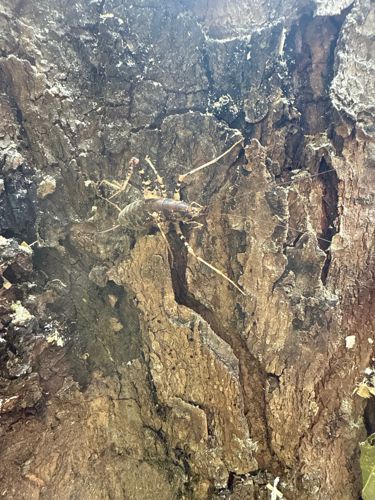Camel Cricket, Cave Cricket, Spider Cricket
Scientific Name: Ceuthophilus spp. (a common genus of camel crickets)
Order & Family: Order: Orthoptera, Family: Rhaphidophoridae
Size: Typically body length ranges from 1 to 4 cm (0.4 to 1.6 inches), with very long antennae that can be much longer than their body.

Natural Habitat
Typically found in cool, damp, and dark environments such as caves, hollow logs, rotting wood, under rocks, basements, crawl spaces, sheds, and wells.
Diet & Feeding
Omnivorous scavengers. They feed on a variety of organic matter including dead insects, fungi, decaying plant matter, and sometimes even fabric and wood if food is scarce.
Behavior Patterns
Camel crickets are primarily nocturnal, seeking shelter during the day in dark, damp places. They are known for their strong jumping ability when disturbed, but they do not chirp like true crickets. They are scavengers and can sometimes be found indoors, especially in basements, crawl spaces, and sheds. Their long antennae help them navigate in the dark.
Risks & Benefits
Generally harmless to humans. They do not bite or transmit diseases. While they can be considered a nuisance pest if found indoors in large numbers, they are important decomposers in their natural outdoor habitats, helping to break down organic matter.
Identified on: 8/29/2025